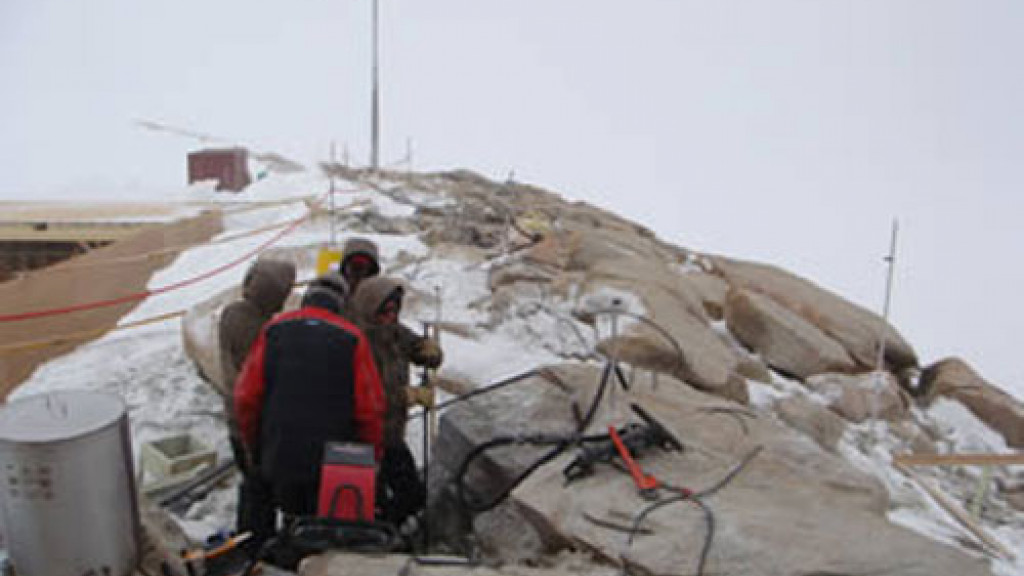BELARE 2007-2008: Drilling and Fixing Anchoring Bars into the Ridge
Working on top of the Nunatak is not an enviable job: the wind comes in from the east and constantly blows your way. Some time ago, the thermometer on top of the rocks indicated -24 degrees Celsius, with gusts of wind reaching 50 km/hour.
Needless to say that working in such severe conditions requires a great deal of morale and a body made of steel. As the drilling work is an essential step in the station's construction, it cannot be interrupted. The whole construction plan would fall behind in schedule.
But, aside from the harsh wind and temperatures, the work in itself is also very demanding: the whole drilling installation often has to be disassembled and moved over the rock slope; some parts of the installation are so heavy that it takes 6 people to drag them over.
On the west side of the Nunatak, a large part of the garage has already been built. On this side of the rocks, the workers are sheltered from the wind. In the afternoon it even gets pretty "warm", when the sun turns to the west. The difference in temperature between the foot and the top of the Nunatak can reach 15 degrees, although there are only a few meters difference between the 2 spots.
In order to fit the working schedule, the drillers have decided to work nightshifts too. Some of the younger guys who used to be working on the garage are now lending a hand to the drillers.
The subsoil is frozen solid (-20°C), making it hard for the drilling material to function properly. Several drill chucks and hammers have already broken off on the frozen granite rocks.
Aside from the drillers, other workers are having to place 6-meter bars, weighing over 50 kg each, into the holes. In order to anchor the bars into the drilling holes, special resin has to be used. The resin is first heated before it is poured into the holes. For the moment 7 of these bars have been put into place. More material will be delivered soon and several more bars will be installed every day. Over 50 bars will have to be placed either vertically or at a certain inclination before the building construction can begin above the ground. Much work still has to be done before the 120 containers arrive with the modules on the coast, towards mid-December.

